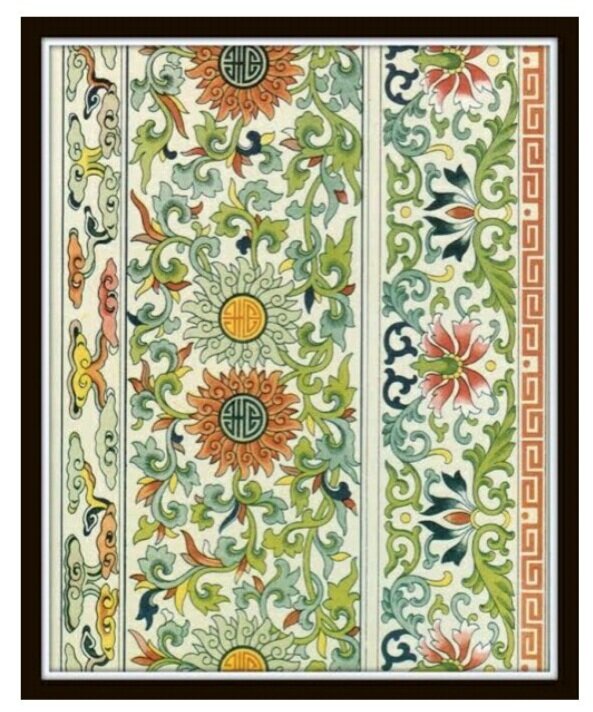Watercolour art dates from Stone Age cave painting when early Paleolithic man first painted pictures of animals and humans on their caves using charcoal, ochre and other natural pigments.
Cave Painting
What makes watercolor painting so unique is its unforgiving nature; lines, colors, and forms must be applied perfectly the first time around, as any attempt to paint over simply renders the entire effect muddied. Watercolors have dominated Asian art and still do today, but they have also enjoyed a prominent place in Western art history.
Watercolour painting on papyrus (Reference from google)
It was later popularized in Egyptian art after the discovery of papyrus (paper). However, papyrus is very fragile and the only paintings that have survived from the Ancient Egyptian era are those that were buried in pyramids in dry conditions.
Chinese watercolour painting (Reference from google)
In traditional Chinese art, watercolours developed around 4,000 BCE, primarily as a medium of decorative art. By the 4th century CE, watercolour landscapes had become established as an independent form of Chinese painting, and would eventually dominate all Chinese brush painting.
During the Middle Ages in Europe, watercolours were used to create illuminated manuscripts and colour maps. During the era of Renaissance art they were used to make portrait miniatures or create studies from nature.
Watercolour Painting in 15th and 16th Centuries
Albrecht Durer
Its first supreme practitioner was the German artist Albrecht Durer (1471-1528) who anticipated many of the English watercolour techniques in a series of magnificent plant studies and landscapes. Durer was one of the first artists to recognize the potential of this medium. His early watercolour paintings focused on depicting topography, but over time he placed much greater emphasis on capturing atmosphere. He also produced highly realistic nature studies, typically combining watercolour and gouache on paper.
Painting by Albrecht Durer
The English Watercolor Movement and Its Influence on Modern Art
Paul Sandby
Watercolor painting really gained a foothold in Western art during the 18th century, particularly in England where Paul Sandby (1730–1809), an English map-maker turned painter (and one of the founders of the Royal Academy), used the watercolor paints so popular in the creation of maps for his landscape paintings.
Watercolour painting by JMW Turner
Paul Sandby, Thomas Girtin and JMW Turner. This group was active from the late 18th century to the mid 19th century, the so-called Golden Age of Watercolour. The unique effects of light and freer brushwork created by the English school of watercolor painting caught the attention of the early Impressionists and influenced their work.
Watercolour painting by Thomas Girtin
Initially the artists restricted their paintings to tint washes. A restricted range of colours were allowed, but the overall effect was quite monochromatic. While some artists continued to create tinted drawings, others began to push the boundaries. Artists like William Pars (1742-82), John Warwick Smith (1749-1831), Thomas Girtin (1775-1802) and Turner, began using a wider palette of stronger colours to create a more painterly effect.
Watercolours soon became popular throughout the UK with for wildlife and plant paintings, as well as new demands for plein-air painters. To accompany archeological and anthropological expeditions around the globe in order to document images of flora and fauna. A new Romantic style of watercolour painting emerged. Using rough-textured paper, paint was applied with a freer brushwork to capture fleeting effects in the landscape. Popular watercolour landscape painters included David Cox (1783–1859), Cornelius Varley (1781–1873) and Samuel Prout (1783–1852).
Rise Of Watercolour Societies
England - In 1804, a group of leading watercolourists founded the Society of Painters in Water-Colours, later to become the Royal Watercolour Society (RWS). Founding members included Francis Nicholson, Samuel Shelley, William Frederick Wells, John Glover, William Henry Pyne and Robert Hills. It is still highly active today.
Ireland - Watercolour Society of Ireland (WCSI) was founded in 1870. Over the years, members of the WCSI have included such famous Irish artists as: Rose Barton (1856-1929), George Campbell (1917-79), Lilian Davidson (1893-1954), Gerard Dillon (1916-71) and so on!
America - Watercolours were also taken up by American artists, Winslow Homer (1836-1910), strongly influenced by the Barbizon School, William Trost Richards (1833-1905), Henry Roderick Newman, and John LaFarge (1835-1910). The American Watercolour Society was established in 1866.
20th Century Watercolourists
The International Watercolor Society (IWS) was established in January 2012 with the objective of promoting the world’s oldest and most deeply rooted painting technique; the art of watercolor. IWS is founded by Mr. Atanur Dogan. Their goal is to promote peace by the use of art; the common language of all the people of the world. Their headquarters are in the ancient city of Teos, Turkey on the eastern shores of the Aegean Sea. The International Watercolor Society has come a long way since its inception back in 2012. They have successfully integrated more than 100 branches worldwide.
Indian watercolor artists are known for their rich style and technique in this tough medium. India, being a land of diverse cultural tastes and amazing scenic beauty is the favorite spot for artists to outline life-rich paintings. Indian watercolor paintings are known for its rich colors and unique style. Even though watercolor is a medium that is tough to deal with, there are many skilled artists who mastered this painting medium with years of hard work and dedication.















